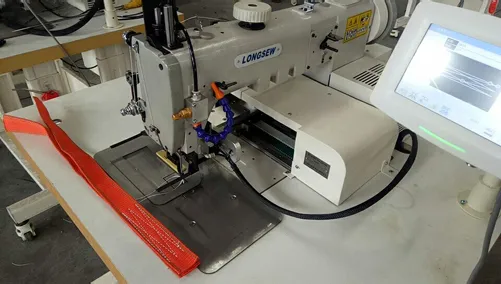Types of Lock Stitch Machines - Comprehensive Guide
Types of Lock Stitch Machines
Lock stitch machines are fundamental tools in the textile and garment industries, renowned for their efficiency in sewing fabric
. These machines create a stitch by interlocking two threads the top thread and the bobbin thread, forming a strong, secure seam that is essential for various sewing applications. This article explores the different types of lock stitch machines, highlighting their features, functionalities, and suitable uses.1. Industrial Lock Stitch Machines Industrial lock stitch machines are designed for high-volume production environments. They are robust, durable, and can withstand prolonged use. Typically used in factories, these machines can sew through multiple layers of fabric, making them ideal for heavy-duty applications like denim, canvas, and leather. They often come with features such as automatic thread trimming, programmable stitch length, and speed control, allowing for increased efficiency and precision in manufacturing.
2. Domestic Lock Stitch Machines Domestic lock stitch machines are more compact and user-friendly, designed for home sewing enthusiasts and hobbyists. These machines are versatile and can handle a variety of fabrics, from lightweight to medium-weight materials. They often include features such as multiple stitch options, adjustable thread tension, and a free arm for sewing cylindrical items like sleeves and cuffs. The ease of use and maintenance makes them an excellent choice for those new to sewing or for occasional projects.
types of lock stitch machine

3. Walking Foot Lock Stitch Machines Walking foot lock stitch machines are specialized for quilting and sewing multiple layers of fabric. The unique walking foot design allows the top layer of fabric to move in sync with the bottom layer, preventing slipping and maintaining even feeding. This feature is particularly useful when working with thick or slippery materials, ensuring that the stitching remains consistent throughout the project. They are popular among quilters and those working with layered fabrics.
4. Computerized Lock Stitch Machines Advancements in technology have led to the development of computerized lock stitch machines, which offer enhanced precision and automation. These machines often come equipped with digital displays, memory functions for custom stitch patterns, and automated functions for tasks like needle threading and stitch selection. Computerized machines are perfect for professional seamstresses and designers looking to elevate their sewing projects with intricate designs and fast turnaround times.
5. Overlock (Serger) Machines While traditionally not classified strictly as lock stitch machines, overlock machines use a modified lock stitch to provide finishing capabilities for seams. They cut and sew simultaneously, creating clean edges that prevent fraying. Overlock machines are essential in garment construction, especially for knits and stretch fabrics, providing a professional finish to garments.
Conclusion Understanding the various types of lock stitch machines is crucial for selecting the right tool for sewing projects. Whether it's an industrial machine for mass production, a domestic model for home use, or specialized machines for quilting and overlocking, each type serves a unique purpose in the sewing landscape. Investing in the right lock stitch machine can significantly enhance productivity and the quality of finished products, making it a vital consideration for anyone involved in textile work.
-
Industrial Cylinder Arm Sewing Machine: Revolutionizing Heavy-Duty SewingNewsJul.28,2025
-
Cylinder Arm Sewing Machine: Perfect for Special Sewing ApplicationsNewsJul.28,2025
-
Cylinder Bed Sewing Machine: Essential for Sewing Complex MaterialsNewsJul.28,2025
-
Heavy Duty Sewing Machine: The Essential Tool for Industrial ApplicationsNewsJul.28,2025
-
Computerized Pattern Sewing Machine: Revolutionizing Precision StitchingNewsJul.28,2025
-
Heavy Duty Industrial Sewing Machine: Power Meets PrecisionNewsJul.28,2025
-
Leather Sewing Machine: The Industrial Standard for Tough MaterialsNewsJul.18,2025





























